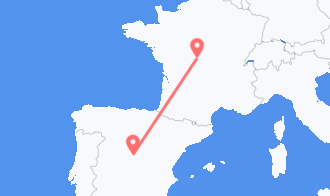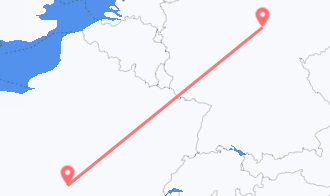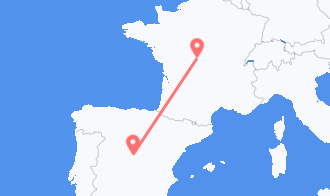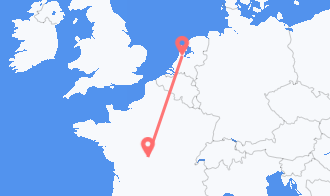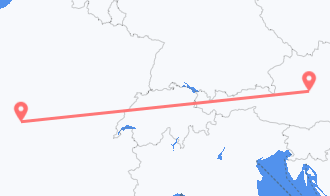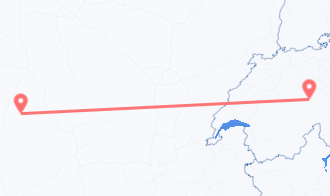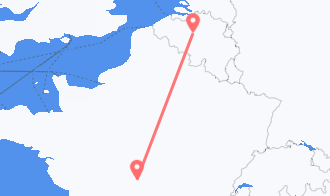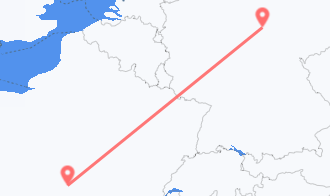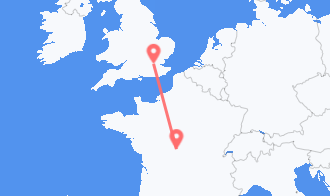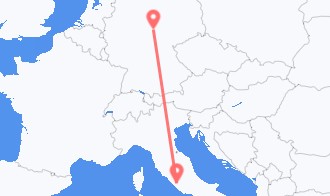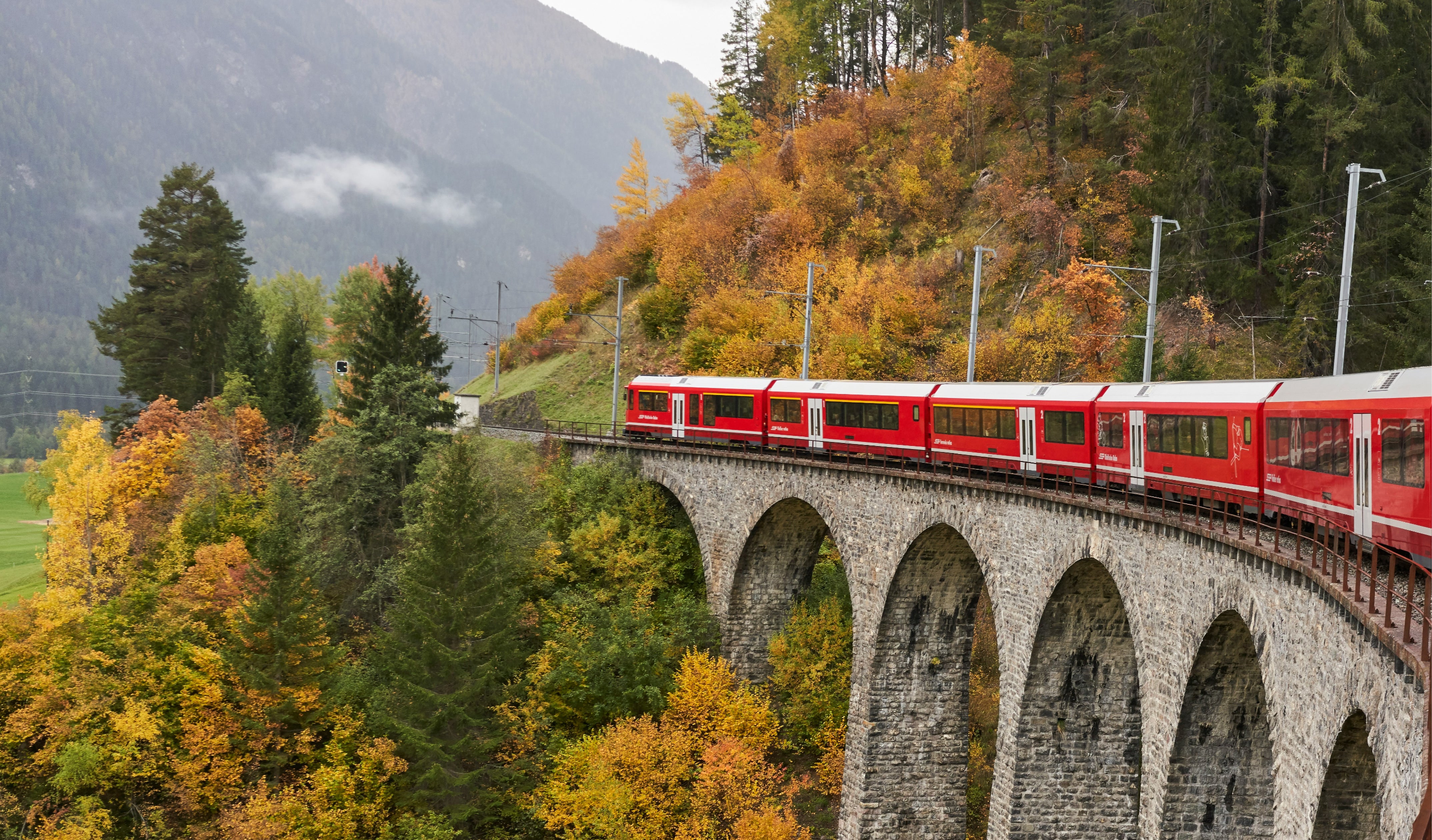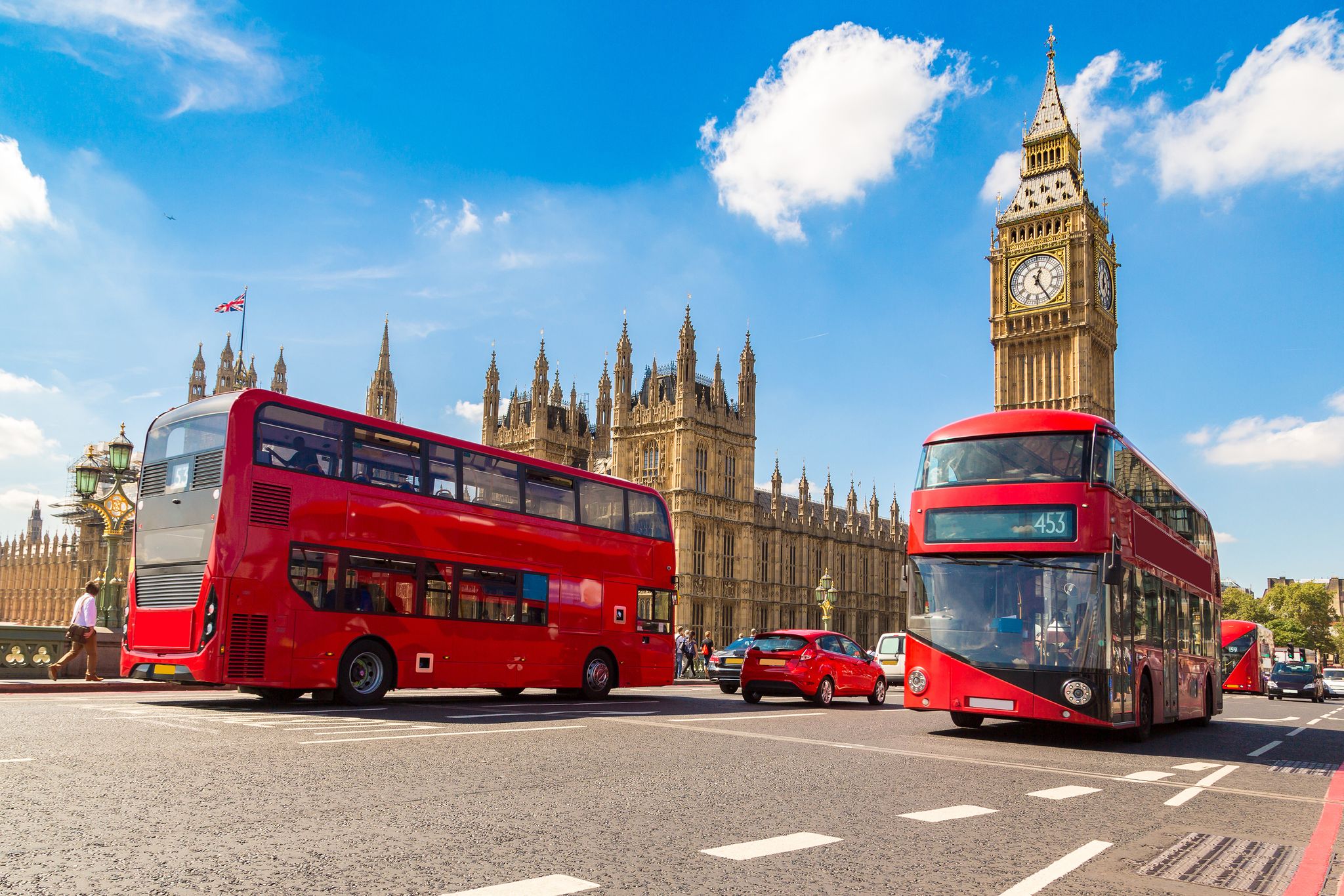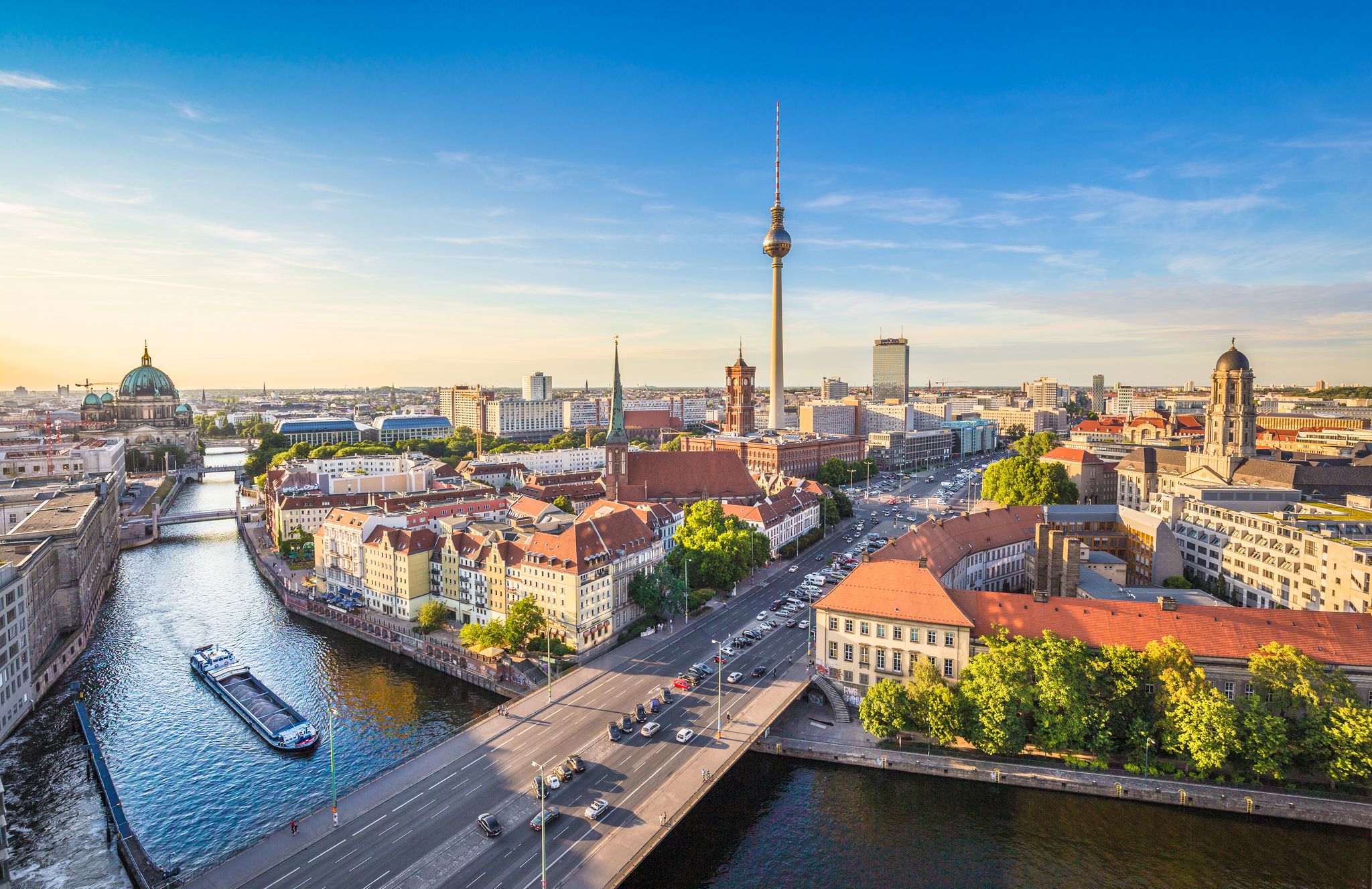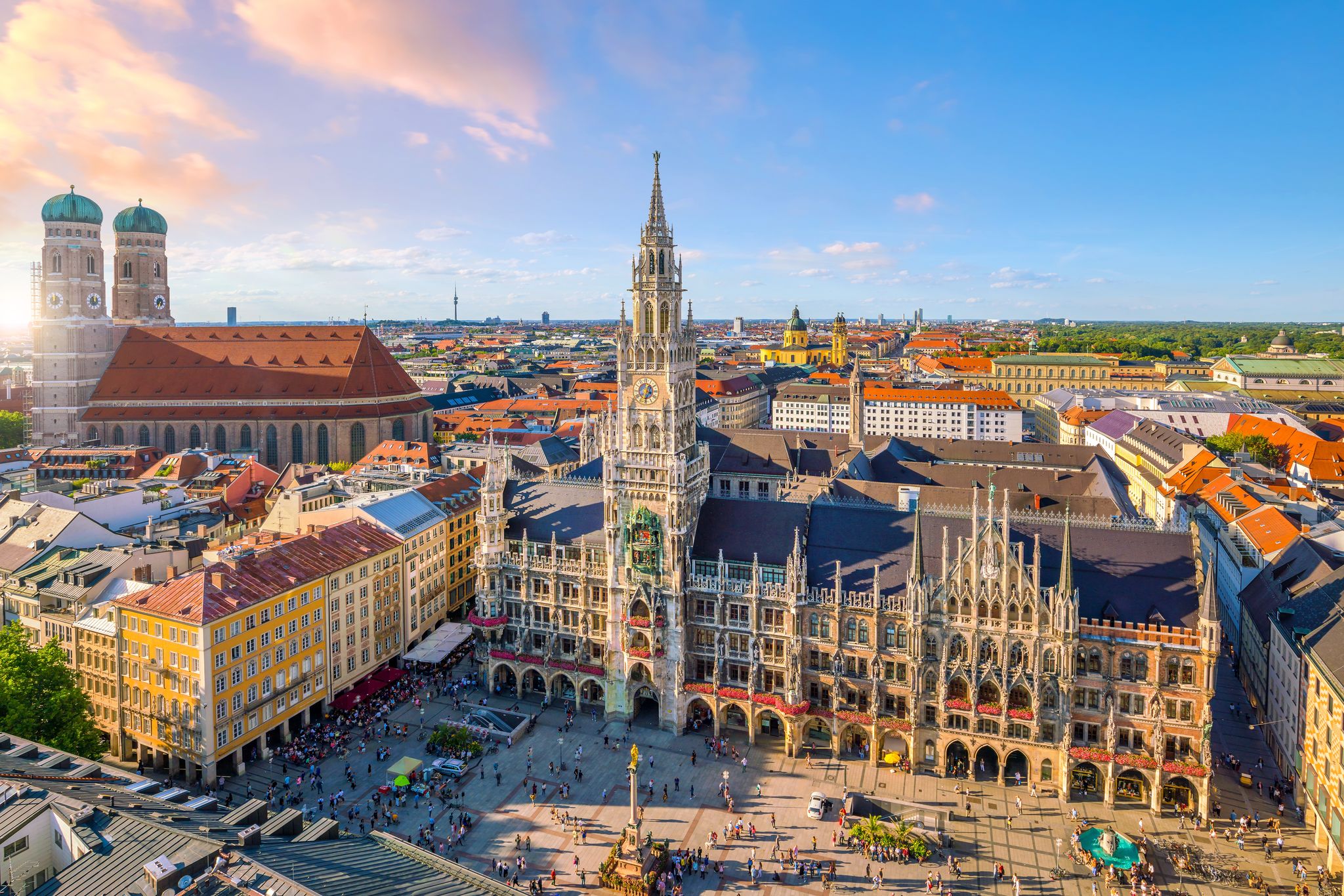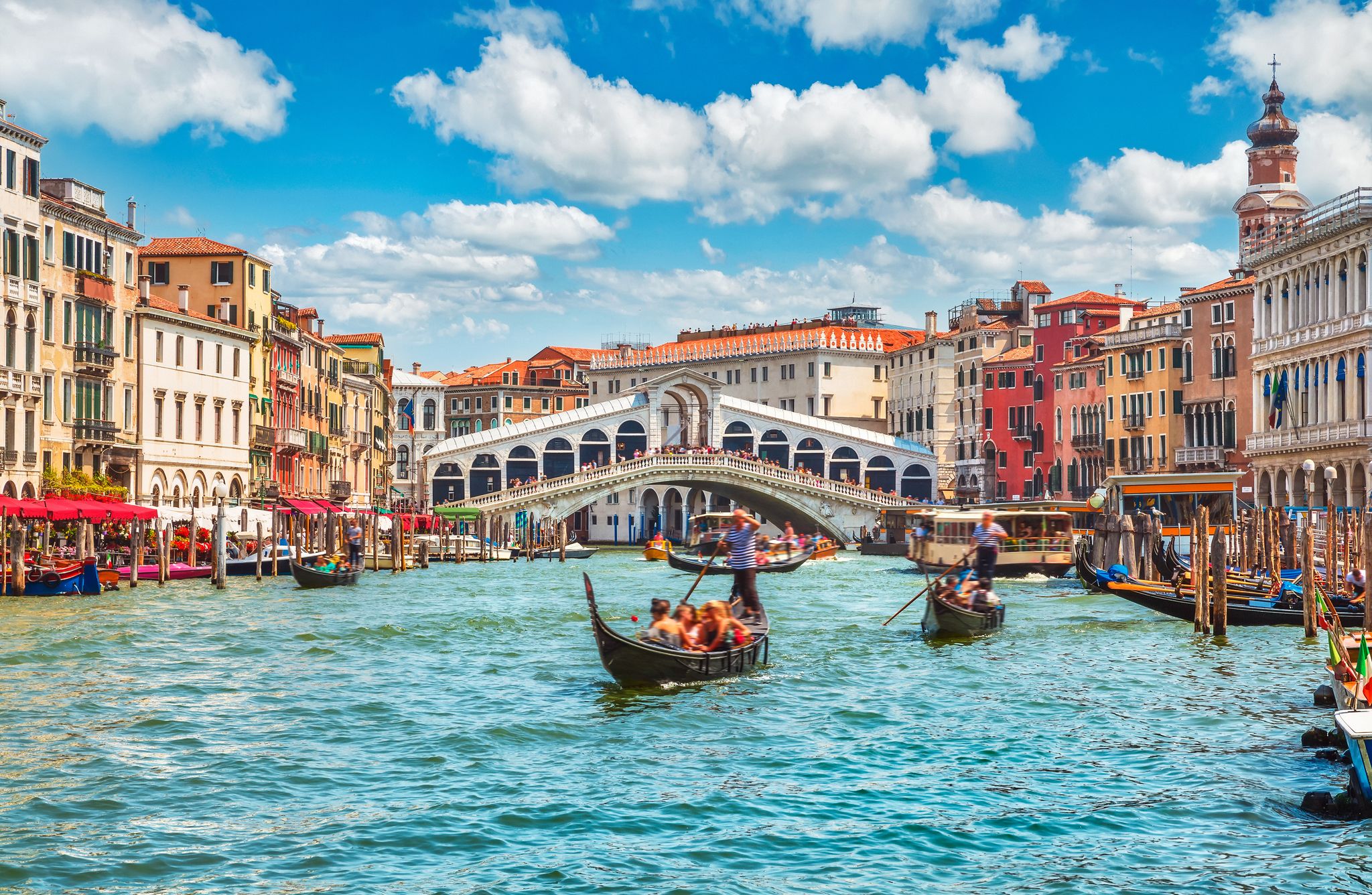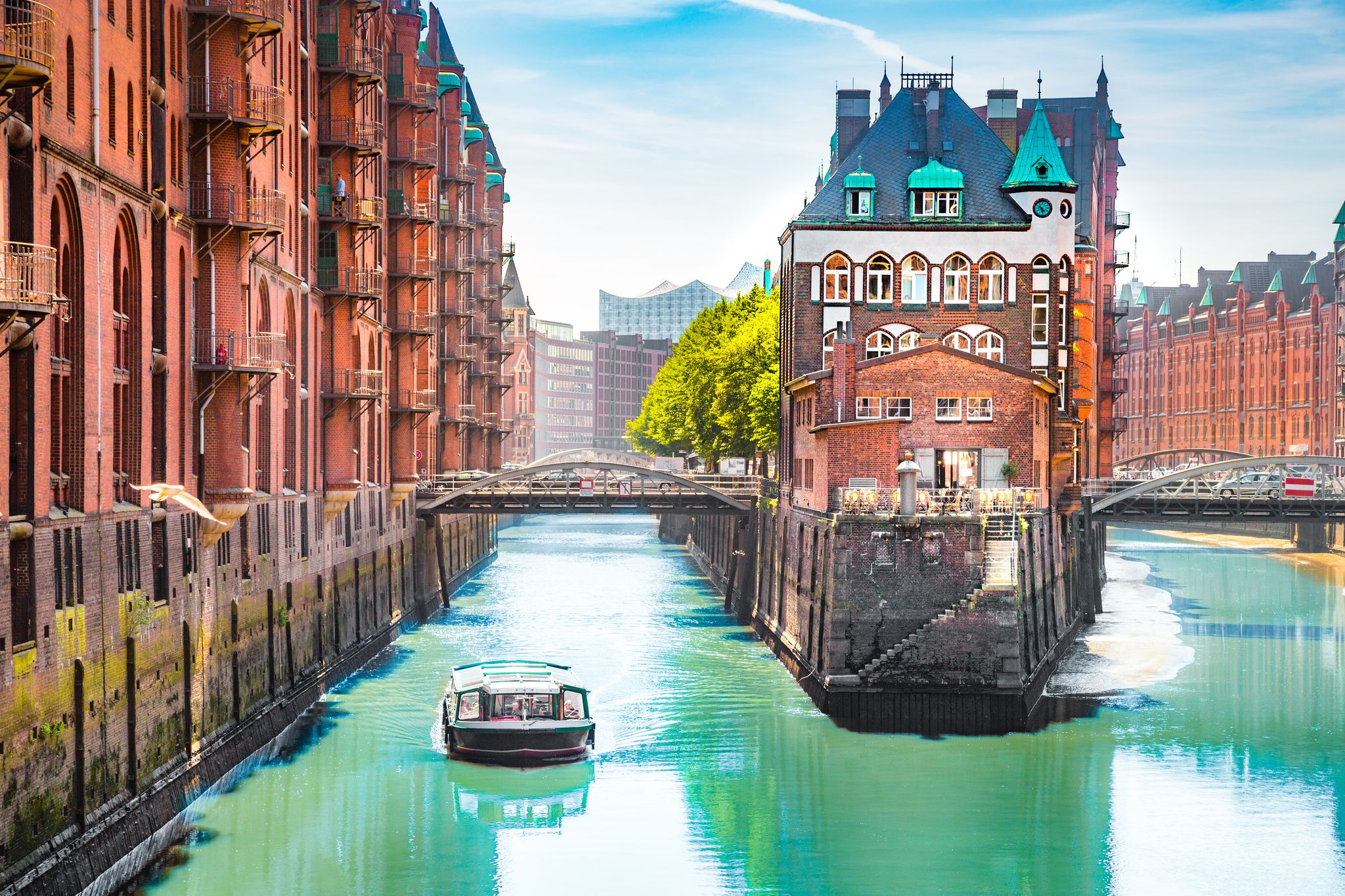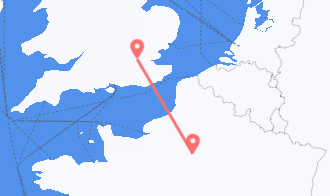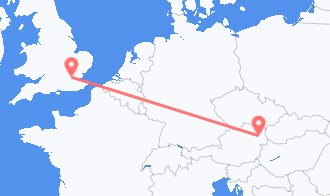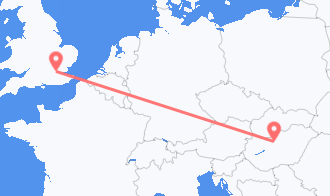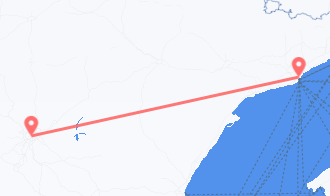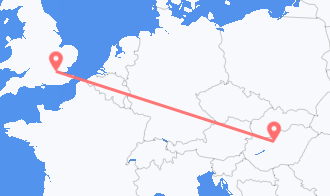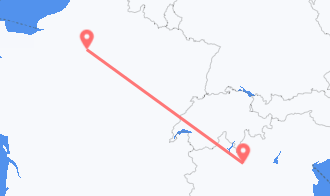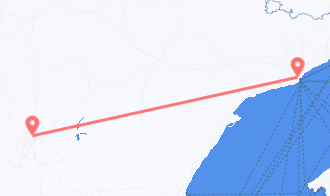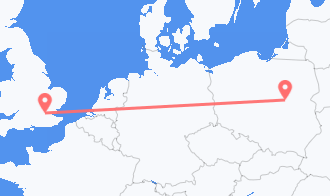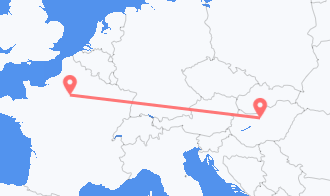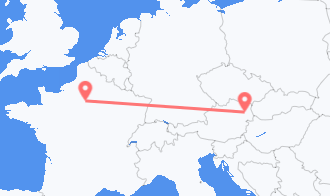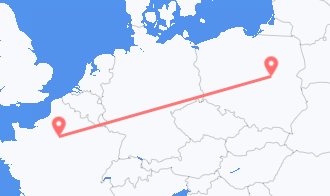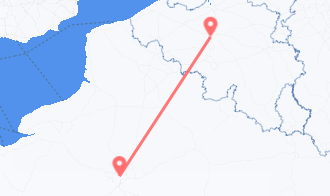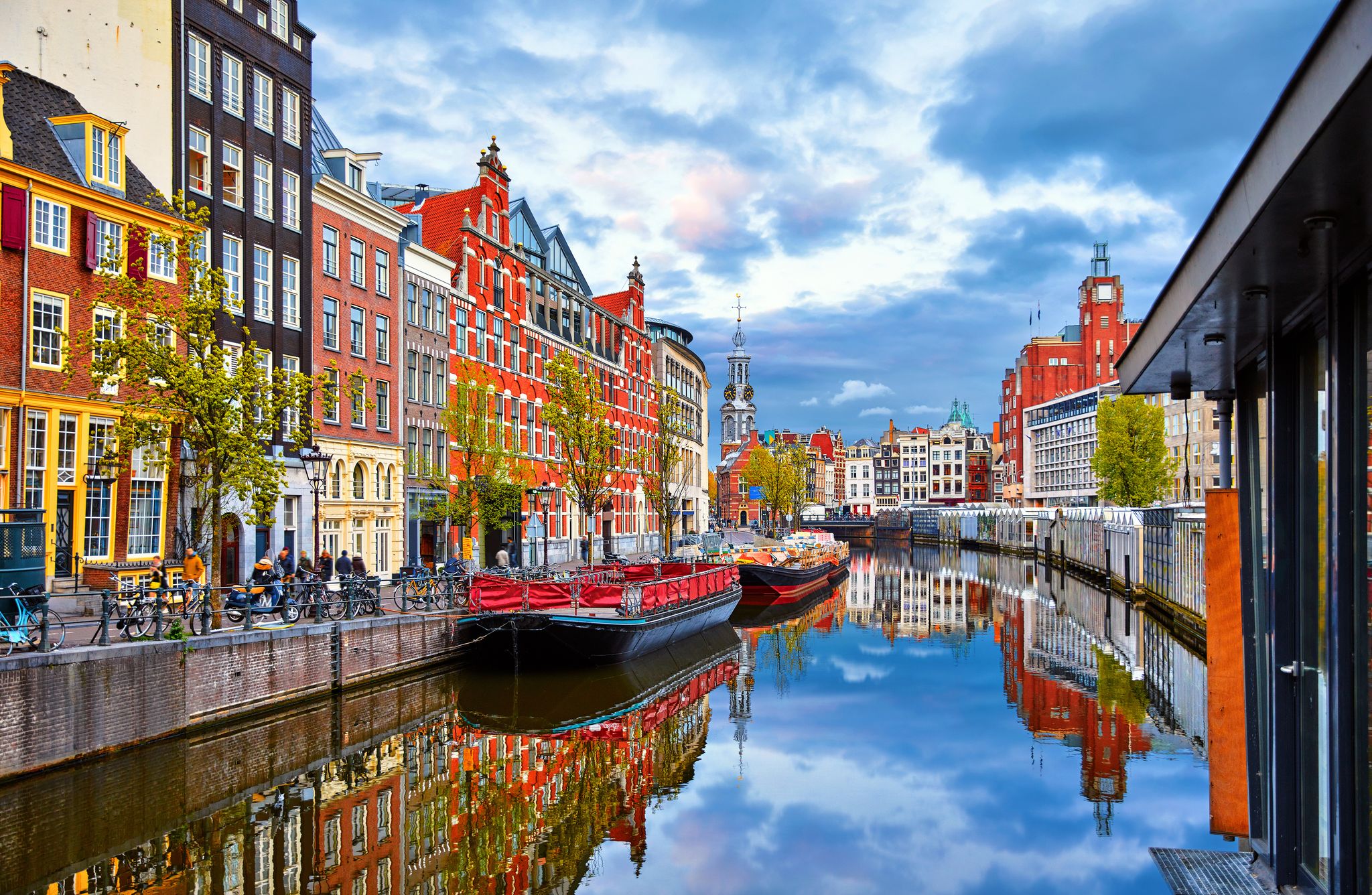
Train Tickets in Europe
Book the best train journeys in Europe on the largest travel marketplace in Europe!
Train Tickets in Europe
Book the best train journeys in Europe on the largest travel marketplace in Europe!
Book cheap train tickets
Select trip
Choose dates
Starting dateReturn date
Not sure where to start?
Check out
Frequently asked questions
Add travelers
Select travelers
Passengers
Select travelers
I live in
Not sure where to start?
Check out
Frequently asked questions
Train tickets in all countries in Europe
Why Choose Europe’s #1 Travel Platform
Discover the advantages that make us the most trusted choice for train travel across Europe.
Wide Selection of European Trains
We compare routes and operators to bring you the most options between major cities and regional towns.
Best Price Guarantee
Find the same ticket cheaper elsewhere? We’ll match it. That’s our promise.
Trusted by Travelers Worldwide
We partner only with reputable operators to ensure a smooth and comfortable trip.
Unbeatable Train Deals
No hidden fees—just real-time access to the lowest fares from leading rail providers.
Seamless Booking Experience
Enjoy instant confirmation and a simple, reliable way to manage your train in Europe journeys.
Multilingual 24/7 Customer Support
Need help on the go? Our team is available anytime, in your language.
Wide Selection of European Trains
We compare routes and operators to bring you the most options between major cities and regional towns.
Unbeatable Train Deals
No hidden fees—just real-time access to the lowest fares from leading rail providers.
Best Price Guarantee
Find the same ticket cheaper elsewhere? We’ll match it. That’s our promise.
Seamless Booking Experience
Enjoy instant confirmation and a simple, reliable way to manage your train in Europe journeys.
Trusted by Travelers Worldwide
We partner only with reputable operators to ensure a smooth and comfortable trip.
Multilingual 24/7 Customer Support
Need help on the go? Our team is available anytime, in your language.
Train tickets to popular cities in Europe
Popular train rides between cities in Europe
Frequently asked questions
How do I book train tickets in Europe?
To book train tickets in Europe, simply scroll up to the top of this page and choose your preferred departing location, destination, starting dates, and number of passengers. Explore the available train options and pick the one that best fits your schedule and preferences.
Once you've made your choice, carefully review the details provided. Enter passenger information, select seats or accommodations if needed, and proceed to payment. Upon completing your payment, you'll promptly receive a confirmation email with your booking details.
Before your travel day, follow the instructions in the email to access your tickets. On the day of your journey, make sure to arrive at the station with your tickets and a valid ID. Validate your tickets if required, then present them as you board the train for a smooth and enjoyable journey.
How far in advance can I book train tickets in Europe?
Booking ahead is a smart approach to getting the cheapest deal on European train tickets and securing them before availability runs out. The advanced booking times for train tickets in Europe can vary due to factors like train type, rail operator, and destination country.
In Austria, Belgium, France, Germany, Sweden, The Netherlands, and The United Kingdom, train tickets can normally be booked up to 3 months before the planned travel date. Rail operators in Italy, Spain, and Switzerland open train bookings anywhere between 2 and 6 months in advance, depending on train type and season. Certain rail operators, like the popular Eurostar, allow bookings up to 11 months before the planned departure date. As a general rule, most train operators typically open bookings about 90 days before your planned travel date.
Can I travel between countries in Europe by train?
Yes, you can travel between countries in Europe by train. Europe’s extensive and well-connected rail networks make cross-border train travel convenient and efficient.
There are various types of trains available for international travel in Europe, including high-speed trains, regional trains, and overnight sleeper trains. Some of the most popular international train routes include the Eurostar between the UK and mainland Europe, Thalys between France, Belgium, the Netherlands, and Germany, and the InterCityExpress (ICE) connecting major cities across Germany and beyond.
When traveling between countries by train, it's important to check the specific requirements for each journey, such as passport and visa regulations, whether seat reservations are necessary, and any border control procedures that might apply. Additionally, some international routes may require advance reservations or have specific schedules, so it's a good idea to plan ahead and research the details of your intended route.
What is a railway pass, and how does it work in Europe?
A railway pass, or rail pass, is a travel document offering unlimited train travel within a specific region or multiple countries in Europe for a set period. Available as single-country or multi-country options, these passes are flexible and cost-effective for exploring Europe. Passes come in various durations, with consecutive days or flexible options. Valid on most regular trains, they provide the freedom to board without individual tickets, although some premium trains might require reservations or extra fees.
Rail passes are activated upon first use and operate on a "train day" basis from midnight to midnight. For instance, an overnight journey from 8 pm to 4 am counts as two days. The first day is from 8 pm to 12 am, and the second day is from 12 am to 4 pm, helping you plan your pass use accurately.
Rail passes cover a broad network, enhancing intercity and regional travel, and can be an economical alternative to point-to-point tickets, offering savings based on travel plans.
What are the busiest and most connected railway stations in Europe?
Gare Du Nord in Paris is Europe's busiest train station, accommodating nearly 700,000 passengers daily. Hamburg Hbf in Germany follows, serving over 500,000 passengers each day. Zurich HB Central Railway Station in Switzerland is also among Europe's busiest railway stations, with 13 platforms and 2,915 daily departures. Rome Termini in Italy accommodates around 150 million passengers yearly, linking Italy to its neighbors via 29 platforms. Munich Hauptbahnhof in Germany rounds off the list, offering 32 platforms and receiving approximately 127 million passengers annually, connecting travelers within Germany and beyond. Amsterdam Centraal also stands out as one of the most connected railway stations in Europe.
These stations offer an array of amenities, from classical music performances in Hamburg Hbf to lively city life within Zurich HB, enhancing the travel experience for millions across Europe. Ready to embark on an unforgettable rail adventure across Europe? Explore the continent's most popular and connected railway stations to ensure a seamless travel experience.
What are the best countries in Europe for train travel?
The best countries in Europe to experience the beauty and convenience of train travel are Germany, France, Switzerland, Spain, the Netherlands, Italy, the United Kingdom, Belgium, Austria, and Sweden. Each of these European nations offers a unique and efficient rail network that makes exploring Europe a delightful adventure.
Germany's high-speed ICE trains ensure swift intercity journeys, while France's TGV network connects major cities with remarkable efficiency. Switzerland's precision and breathtaking routes provide a seamless travel experience, and Spain's AVE network facilitates easy domestic travel.
The Netherlands boasts a well-developed rail system, with Amsterdam Centraal as a crucial international junction. Italy's comprehensive rail web includes high-speed services like Frecciarossa and Frecciargento, perfect for traveling between iconic destinations. In the UK, you can explore the entire nation by train, and Eurostar connects London to mainland Europe.
Belgium's compact size makes it easy to explore via train, with Brussels at its rail center. Austria's ÖBB manages a dependable rail system with efficient links to neighboring countries. Lastly, Sweden offers modern infrastructure, including high-speed trains, enhancing connectivity and your overall travel experience.
What are the most beautiful train routes in Europe?
Europe boasts a collection of incredibly scenic train routes that traverse diverse landscapes. This makes pointing out the best train journey in Europe a challenge. The Bernina Express in Switzerland offers captivating views of glaciers and Alpine villages. Switzerland's Glacier Express traverses stunning meadows, gorges, and charming towns. Scotland's West Highland Line winds through rugged Highlands, showcasing lochs and the Glenfinnan Viaduct.
Italy's Amalfi Coast Railway provides a coastal journey with Mediterranean vistas and cliffside towns. The Cinque Terre Line unveils the enchanting villages perched on cliffs overlooking the Ligurian Sea. Norway's Bergen Line offers fjords, waterfalls, and the Hardangervidda Plateau. The GoldenPass Line in Switzerland winds through picturesque meadows, villages, and Lake Geneva. Norway's Flam Railway unveils waterfalls and fjords along its ascent. Spain's El Transcantábrico indulges in northern coast beauty, while Germany's Rhein Valley Line presents castles, vineyards, and charming towns along the Rhine. These popular train routes in Europe capture the continent’s natural and cultural wonders, offering travelers unforgettable scenic experiences.
What are the advantages of traveling by train in Europe?
Traveling by train in Europe presents a host of advantages! The continent's extensive rail network ensures efficient and well-connected routes, with frequent departures and minimal disruptions. Beyond convenience, scenic vistas grace train windows, showcasing diverse landscapes from mountains to coastlines.
Train stations are often centrally located, affording easy access to city centers without lengthy transfers. Onboard, passengers relish comfortable seating, ample legroom, and the option to move around, complemented by amenities such as dining cars. Train travel is environmentally conscious, emitting fewer carbon emissions than flights, aligning with sustainability goals.
Cost-effectiveness is a notable advantage, with advanced booking or rail passes yielding savings compared to other modes of travel. Immersion in local culture and landscapes heightens the journey's appeal, and the simplified process minimizes stress by sidestepping lengthy security checks and cumbersome airport procedures. Interactions with fellow passengers foster social connections, while accessibility and increasing Wi-Fi availability enhance the overall experience. In conclusion, traveling by train in Europe encapsulates a harmonious blend of efficiency, comfort, eco-friendliness, and cultural immersion, making it a preferred and enjoyable way to explore the continent.
What type of trains are there in Europe?
Europe's rail network encompasses a range of train types tailored to various travel needs. High-speed trains like the TGV, ICE, and AVE swiftly connect major cities, while intercity trains offer comfortable travel with fewer stops. Regional and local trains serve short distances and commuting routes, while night trains provide sleeper options for longer journeys.
Scenic trains like the Bernina Express offer panoramic views, and Eurostar links the UK with Europe via the Channel Tunnel. Thalys connects France, Belgium, the Netherlands, and Germany. Italy's Frecciarossa and Frecciargento are high-speed options. Urban rail systems include S-Bahn, metro, and tram. Luxury and tourist trains offer unique experiences, and cross-country trains provide interregional connectivity. This diverse array of train types caters to a wide range of travel preferences and distances across Europe.
Can I book overnight train trips in Europe?
Absolutely, night trains are a popular and practical option for travel in Europe. They allow you to cover longer distances while also saving on accommodation costs for the night. Available in various European countries, night trains offer different sleeping arrangements, making it convenient to rest and wake up at your destination.
To ensure availability, especially during peak travel times, it's recommended to book night train tickets in advance. Additionally, it's essential to verify the amenities and sleeping arrangements offered by the specific night train you're considering, as these can vary between routes and train operators. Overall, night trains are a versatile and enjoyable option for travelers exploring Europe.
How do I get on the right train in Europe?
To ensure a seamless experience when boarding trains in Europe, a few straightforward steps can be taken. First, check your ticket details, including the train number, departure time, and intended destination. Next, arrive early and consult the departure boards at the station to confirm the platform and any updates regarding your train's schedule. Follow the station signs to navigate to the correct platform in advance of departure. On the platform, locate the carriage numbers or class indicators on the train's sides, matching them with your ticket to identify your designated area. If your ticket includes a seat reservation, ensure that the seat number corresponds to your ticket before entering the train.
Something to keep in mind is that European trains go according to military time. If you are not used to this, you can set your phone or watch to military time a few days before your trip to get used to using it. Stay attentive to announcements and potential changes to platforms or schedules. Lastly, double-check that the train's final destination aligns with your intended stop, particularly in cases where trains split en route. By following these steps, you can confidently navigate the European rail network and embark on your journey with ease.
Are Europe's train systems wheelchair accessible?
Accessibility for passengers using wheelchairs in Europe's train systems varies, but efforts have been made to improve the overall experience. The European Union has established regulations to promote accessibility in public transportation, including trains, aimed at ensuring comfortable travel for people with reduced mobility.
Modern trains often feature low-floor entrances, ramps, and designated spaces for wheelchair users, simplifying boarding and disembarking. Some train operators require advance reservations for passengers with reduced mobility to ensure proper assistance and accommodation. Stations may offer assistance services to help with boarding, finding platforms, and navigating amenities.
You can always contact us at info@guidetoeurope.com or by clicking the chat bubble to assist you in finding accessible train tickets. Proactive planning and communication can help ensure a more accessible and seamless train travel experience for wheelchair users in Europe.
Are there any family or group discounts for train tickets in Europe?
Yes, you can usually find discounts for families and groups when booking train tickets in Europe. The availability of such varies between countries, rail operators, and train types. Child discounts are applicable for young travelers below a certain age, and youth discounts usually cater to passengers aged 12 to 25.
Seniors can also enjoy reduced fares on selected routes. For those planning to explore multiple destinations, rail passes offer an economical solution, with certain passes extending discounted rates for families or groups traveling in unison. Keep an eye out for seasonal promotions during holidays or off-peak periods to secure even cheaper rates. Booking in advance is recommended to ensure availability and secure the best rates for family and group travel experiences.
Are there any age-specific discounts for train tickets in Europe?
Certainly! Age-specific discounts for train tickets are a common practice in Europe, catering to various passenger demographics. Families traveling with children can benefit from child discounts, which provide reduced fares or even free travel for kids under a certain age. For young travelers aged 12 to 25, youth discounts offer a cost-effective option, encouraging affordable exploration for students and young individuals. Seniors are often eligible for reduced fares or special offers, depending on the train operator and specific route. While not age-specific, family tickets present a practical solution for group travel, offering reduced fares for a designated number of adults and children traveling together. Use the search bar at the top of this page to compare and book the cheapest train tickets in Europe!
What are the different classes or categories of train tickets in Europe?
In Europe, train tickets are typically grouped into distinct classes or categories, each offering varying levels of comfort, amenities, and services. The common classes include Standard Class (also known as 2nd Class), which provides economical seating with standard legroom and basic amenities. First Class (or 1st Class) upgrades the experience with more spacious seating, often arranged in a 2+1 configuration, and sometimes complimentary refreshments.
Business Class is available on select high-speed and premium trains, offering extra comfort, workspaces, power outlets, and enhanced services like meal offerings. Similarly, Premium Class delivers enhanced amenities such as larger tables and catering services. On night trains, Sleeper Class offers sleeping accommodations in private cabins with beds or shared Couchette Class with bunk beds.
Quiet Zones or Silent Carriages provide a serene atmosphere, while Family Areas cater to passengers traveling with children. Additionally, some trains in Europe offer Economy Class as a basic option and Premium Economy Class as a mid-tier choice between standard and first class. Scroll to the top of this page to find the European train tickets and passes that align with your needs and preferences!
Can I make changes or cancel my train ticket reservation in Europe?
In Europe, the ability to change or cancel your train ticket reservation varies based on factors like the train operator, ticket type, and fare category. Flexible tickets offer greater freedom, permitting changes to travel dates or cancellations with minimal fees. Non-flexible tickets, often at lower fares, tend to have stricter rules.
Making changes or cancellations sooner is generally advisable, as train operators often set deadlines to avoid extra charges. Understanding refund policies is crucial; cancellation timing and ticket type influence whether you receive a full or partial refund. For travelers using rail passes, terms and conditions should be reviewed to comprehend the flexibility they offer.
Before finalizing reservations, read the terms and conditions associated with your chosen ticket to make informed decisions. If uncertainties arise, contact us through the chat or at info@guidetoeurope.com to get all the answers you need!
What do I need to do prior to my train departure?
Ensure you're present at the station well in advance before your train's scheduled departure for a stress-free journey. For travelers with a rail pass, it's essential to activate it at the ticket window before boarding. If you possess a print-at-station ticket, locate a self-service kiosk for printing.
To locate your train, refer to the prominent departure boards situated at the heart of most stations. The platform number will also be displayed on these boards. Compare the train number and departure time on your reservation ticket, as your destination city might not be explicitly mentioned on the board.
Once you're on the platform, note that each rail car is labeled with a “1” or “2”, indicating its class of service. Your reservation ticket contains details like your car or coach number, seat number, and class of service. For open tickets without reservations or rail passes, simply board the train in the class of service indicated on your ticket or pass.
Contact us at info@guidetoeurope.com if you have any additional questions about your European train journey!
What do I do with my luggage on a train in Europe?
Arrangements for luggage on European trains can vary. Smaller and medium-sized bags usually fit in racks above or under seats. Larger suitcases are often stored on racks near the train's entrance in your respective car.
For Eurostar, Thalys, and TGV travel, you're allowed two luggage items along with your usual carry-on. Remember, on these trains, including French ones, it's necessary to label your bags with your full name. When traveling within Switzerland, the "Fast Baggage" service provides same-day delivery between 45 cities for your convenience. It's important to know that you're responsible for your luggage, as the railways aren't liable in case of loss or theft.
How do I find cheap train tickets in Europe?
To find the cheapest train tickets in Europe, it's all about smart planning. Train ticket prices in Europe can vary widely based on factors such as distance, class, and booking time. Booking your train tickets well in advance can often lead to significant savings, as European rail companies often offer cheap deals for early birds. Keep in mind that traveling during off-peak hours or on weekdays when prices tend to be cheaper can also help you secure budget-friendly options. Avoiding peak tourist seasons is another tip for scoring the best deals on train tickets in Europe.
Consider exploring rail passes such as the Eurail Pass or Interrail Pass, especially if you plan to visit multiple European destinations by train. These passes offer excellent value for money and can make your train travel in Europe significantly cheaper.
Our platform is designed to assist you in your quest for the cheapest train tickets in Europe. Take advantage of it to effortlessly compare fares from various rail operators, making it easy to find the best prices. Start planning your affordable train journey today!
Popular types of travel packages in Europe
travel packages in all countries in Europe
travel packages in all the top destinations in Europe
Top-rated Travel packages in Europe
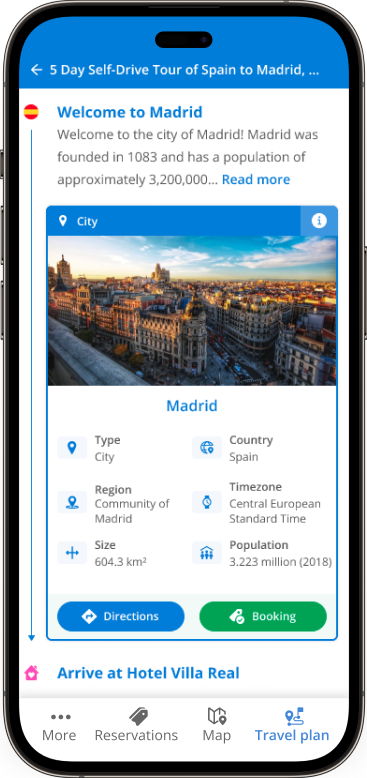
Install Europe’s biggest travel app
Download Europe’s biggest travel marketplace to your phone to manage your entire trip in one place
Scan this QR code with your phone camera and press the link that appears to add Europe’s biggest travel marketplace into your pocket. Enter your phone number or email address to receive an SMS or email with the download link.
